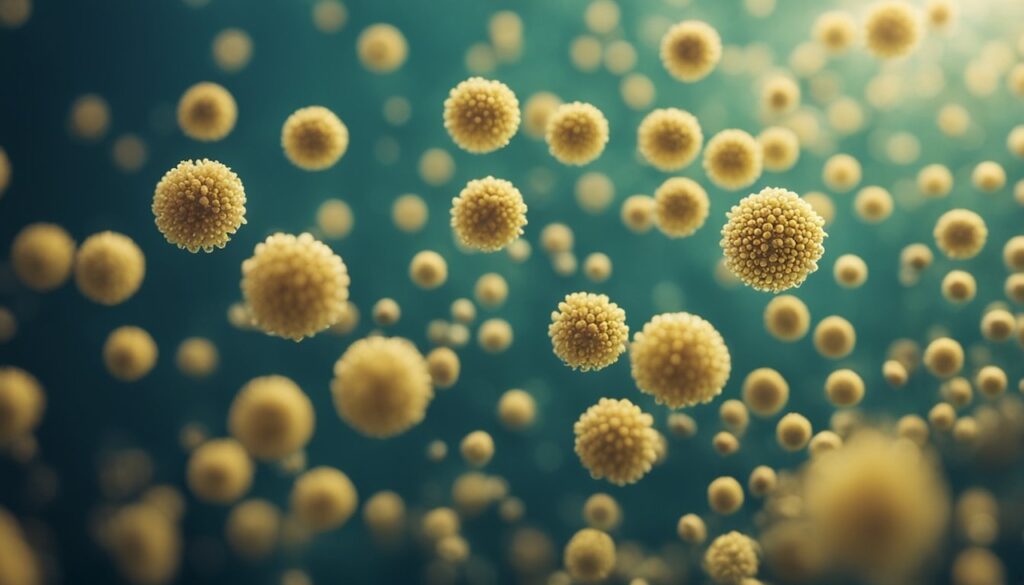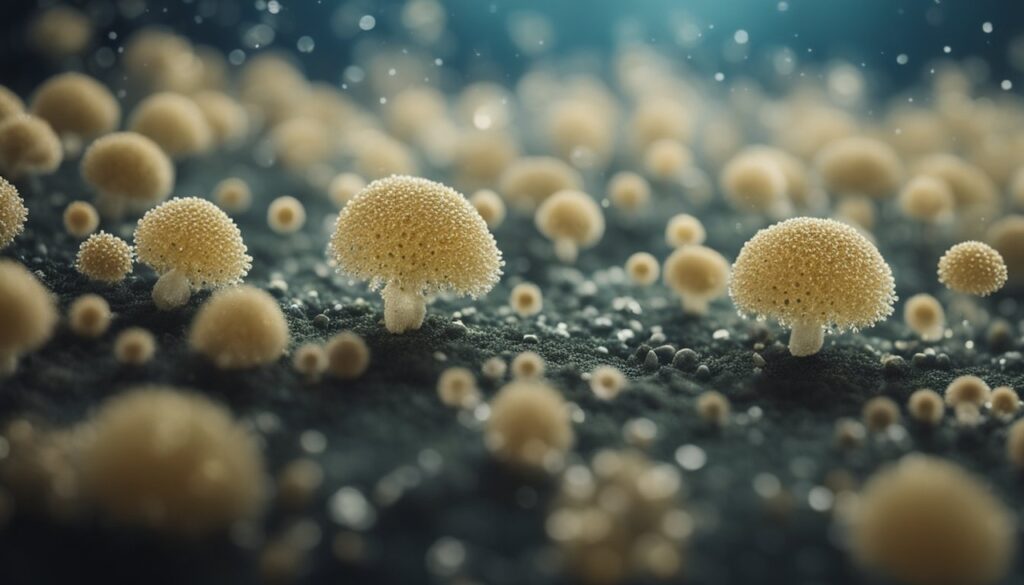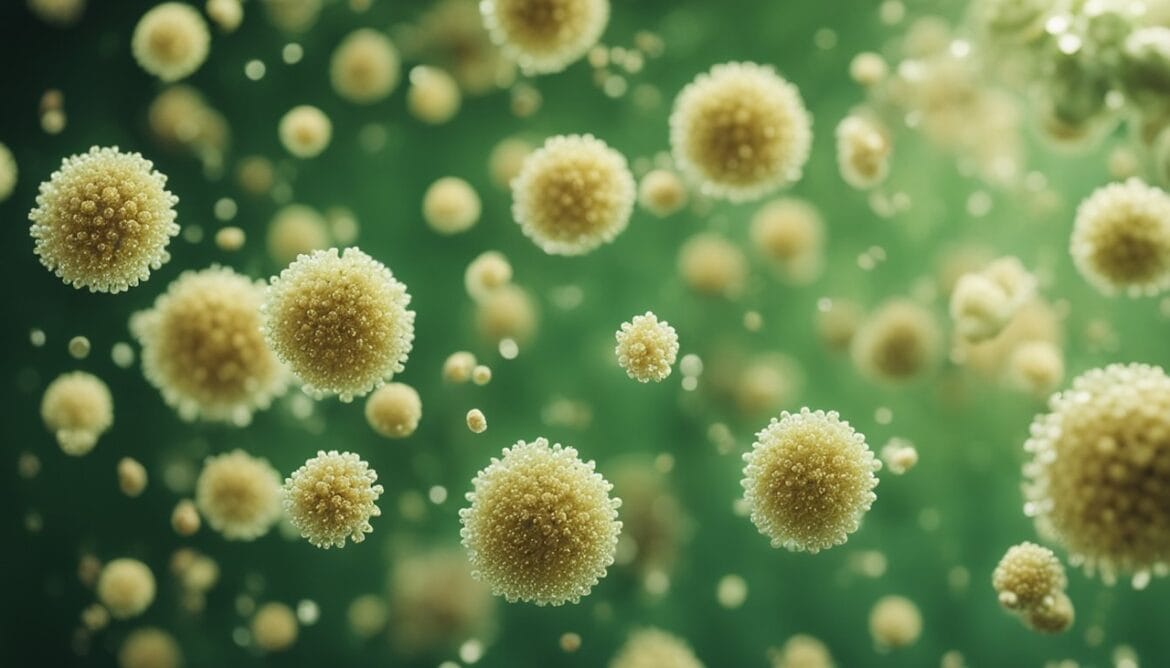Mold is a common problem in Florida homes, and it can cause a range of health issues.
Mold spores are tiny, microscopic particles that are released into the air by mold growth, as well as whenever mold is disturbed such as during cleaning, moving furniture, etc.
Mycotoxins are toxic substances produced by certain types of mold.
Mold spores are incredibly small, typically ranging in size from 1-100 microns. To put that into perspective, a human hair is about 50-100 microns in diameter. Mold spores are so small that they can easily become airborne and be inhaled into the lungs. Mycotoxins are even smaller than mold spores, typically ranging from 0.1-10 microns in size. These toxins are released into the air by certain types of mold and can cause a range of health issues when inhaled.
Understanding the size and characteristics of mold spores and mycotoxins is just the beginning when it comes to addressing mold problems. By identifying the type of mold and the extent of the problem, individuals can take appropriate steps to remove the mold and prevent it from returning. In the following article, we will explore the characteristics of mold spores and mycotoxins in more detail, as well as the health implications of exposure to mold.
- Mold spores are typically 1-100 microns in size, while mycotoxins are even smaller at 0.1-10 microns.
- Mold spores and mycotoxins can cause a range of health issues when inhaled.
- Identifying the type of mold and extent of the problem is crucial for addressing mold issues.
Size of Mold Spores
Mold spores are tiny reproductive structures produced by fungi. They are so small that they can only be seen under a microscope. The size of mold spores varies depending on the species of mold, but they typically range from 1 to 100 microns in diameter. To put that into perspective, a human hair is about 100 microns in diameter, so mold spores are much smaller than that.
Variability Among Species
It is important to note that there is a lot of variability among different species of mold when it comes to the size of their spores. Some molds produce spores that are as small as 1 micron in diameter, while others produce spores that are as large as 100 microns in diameter. Additionally, the shape and color of mold spores can also vary depending on the species.
Overall, the size and characteristics of mold spores can vary widely among different species of mold. However, it is important to remember that even though mold spores are small, they can still have a significant impact on human health if they are inhaled or come into contact with the skin.
Mycotoxins

Mycotoxins are secondary metabolites produced by certain types of fungi, including molds. These toxins are often produced as a defense mechanism by the fungi to protect themselves from other organisms. Mycotoxins can be found in a variety of foods, such as grains, nuts, and spices, as well as in indoor environments where mold growth occurs.
The production of mycotoxins is influenced by several factors, including temperature, humidity, and nutrient availability. Higher temperatures and humidity levels can promote the growth and production of mycotoxins, while nutrient availability can affect the type of mycotoxin produced.
Size of Mycotoxins
Mycotoxins are typically small molecules, with molecular weights ranging from 100 to 1000 Da (Daltons). This means that they are smaller than most proteins and other cellular components. The size of mycotoxins can vary depending on the specific compound, but they are generally small enough to be inhaled or ingested.
Because of their small size, mycotoxins can easily penetrate cell membranes and enter the bloodstream. This can lead to a range of health effects, including respiratory problems, neurological symptoms, and immune system dysfunction.
Overall, understanding the production and size of mycotoxins is important for identifying potential health risks associated with exposure to these compounds. By taking steps to prevent mold growth and exposure to mycotoxins, individuals can help protect their health and well-being.
Health Effects

Respiratory
Mold spores and mycotoxins can cause a range of respiratory effects, particularly in individuals with pre-existing respiratory conditions such as asthma or allergies. Inhaling mold spores can irritate the nose, throat, and lungs, leading to symptoms such as coughing, wheezing, and shortness of breath. Mycotoxins, on the other hand, can cause more severe respiratory symptoms such as pulmonary hemorrhage and bronchitis.
To reduce the risk of respiratory effects from mold spores and mycotoxins, it is important to maintain good indoor air quality by keeping humidity levels low and ensuring proper ventilation. Individuals with respiratory conditions should also take extra precautions to avoid exposure to mold and mycotoxins.
Long-Term Exposure
Long-term exposure to mold spores and mycotoxins has been linked to a range of health risks, including neurological symptoms, immune system dysfunction, and cancer. However, the exact health risks associated with long-term exposure to mold and mycotoxins are still not fully understood, and more research is needed to determine the extent of these risks.
Individuals who are exposed to mold and mycotoxins on a regular basis, such as those who work in moldy environments or live in homes with mold problems, may be at increased risk of developing health problems over time. It is important for individuals who are concerned about mold exposure to consult with a healthcare professional and take steps to reduce their exposure to mold and mycotoxins.
Frequently Asked Questions
What is the size range for mold spores commonly found in indoor environments?
Mold spores are typically between 1 and 20 microns in size, with the most common sizes being between 3 and 10 microns. However, some species of mold can produce spores as small as 0.5 microns or as large as 100 microns.
How do the sizes of mold spores compare to common viruses?
Mold spores are generally larger than viruses, which range in size from 0.02 to 0.3 microns. However, some viruses can be larger than certain species of mold spores.
What is the typical size of black mold spores?
Black mold spores, or Stachybotrys chartarum, are typically between 5 and 10 microns in size. However, the size can vary depending on the environmental conditions and the stage of growth.
How do the dimensions of mycotoxins relate to mold spore sizes?
Mycotoxins are produced by some species of mold and can range in size from 0.5 to 10 microns. While mycotoxins are smaller than most mold spores, they can still pose a significant health risk if inhaled or ingested.
Can mold spores be smaller than the average, and what does that mean for air quality?
Yes, some species of mold can produce spores that are smaller than the average size. This can make it more difficult to detect them in the air, as they may not be captured by standard air filters. However, even small mold spores can pose a health risk if inhaled.
What are the characteristics of the most hazardous molds found in homes?
The most hazardous molds found in homes are those that produce mycotoxins, such as Stachybotrys chartarum and Aspergillus. These molds can cause a range of health problems, including respiratory issues, neurological symptoms, and even death in extreme cases. It is important to address any mold growth in the home promptly to prevent potential health risks.







